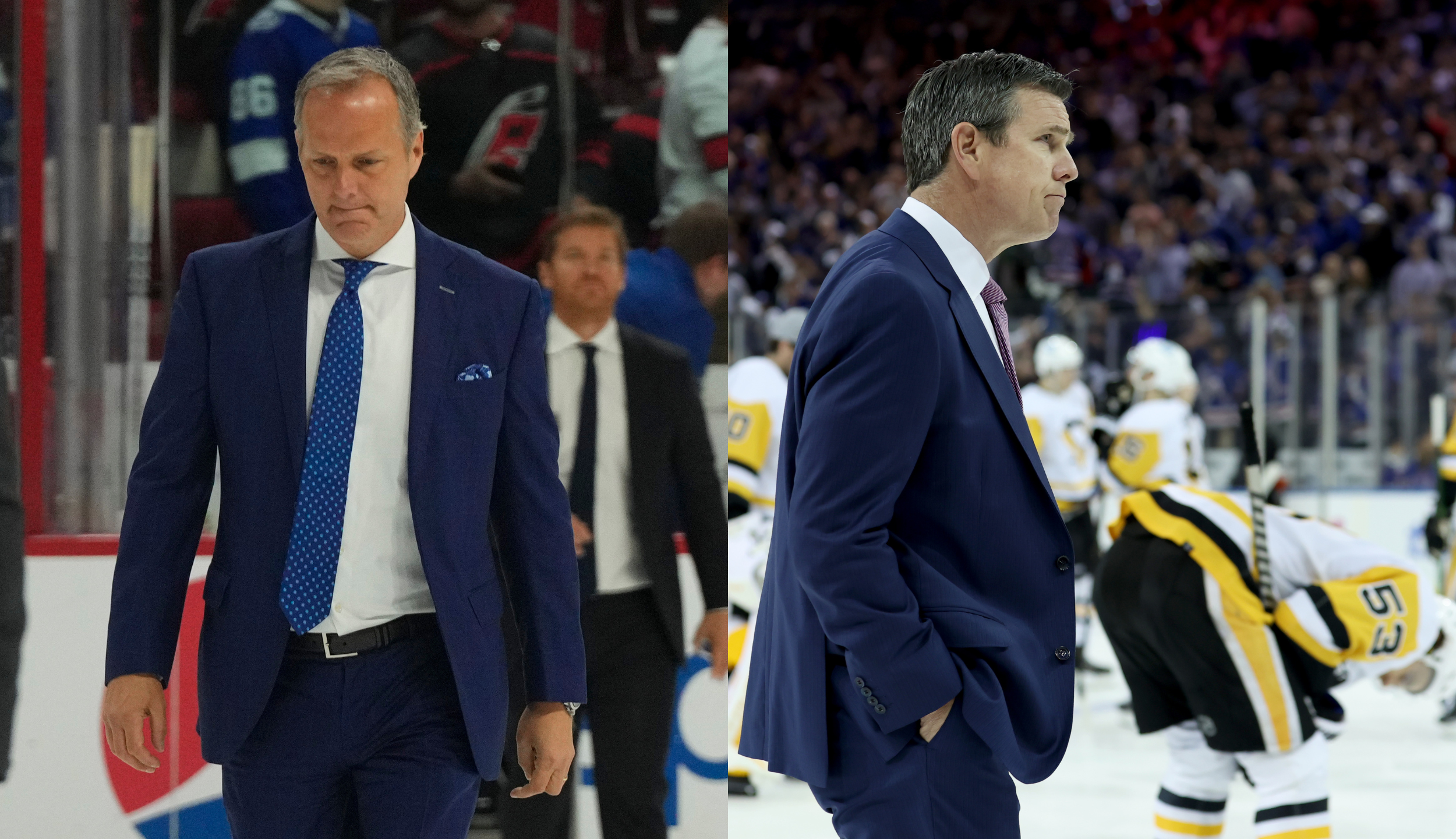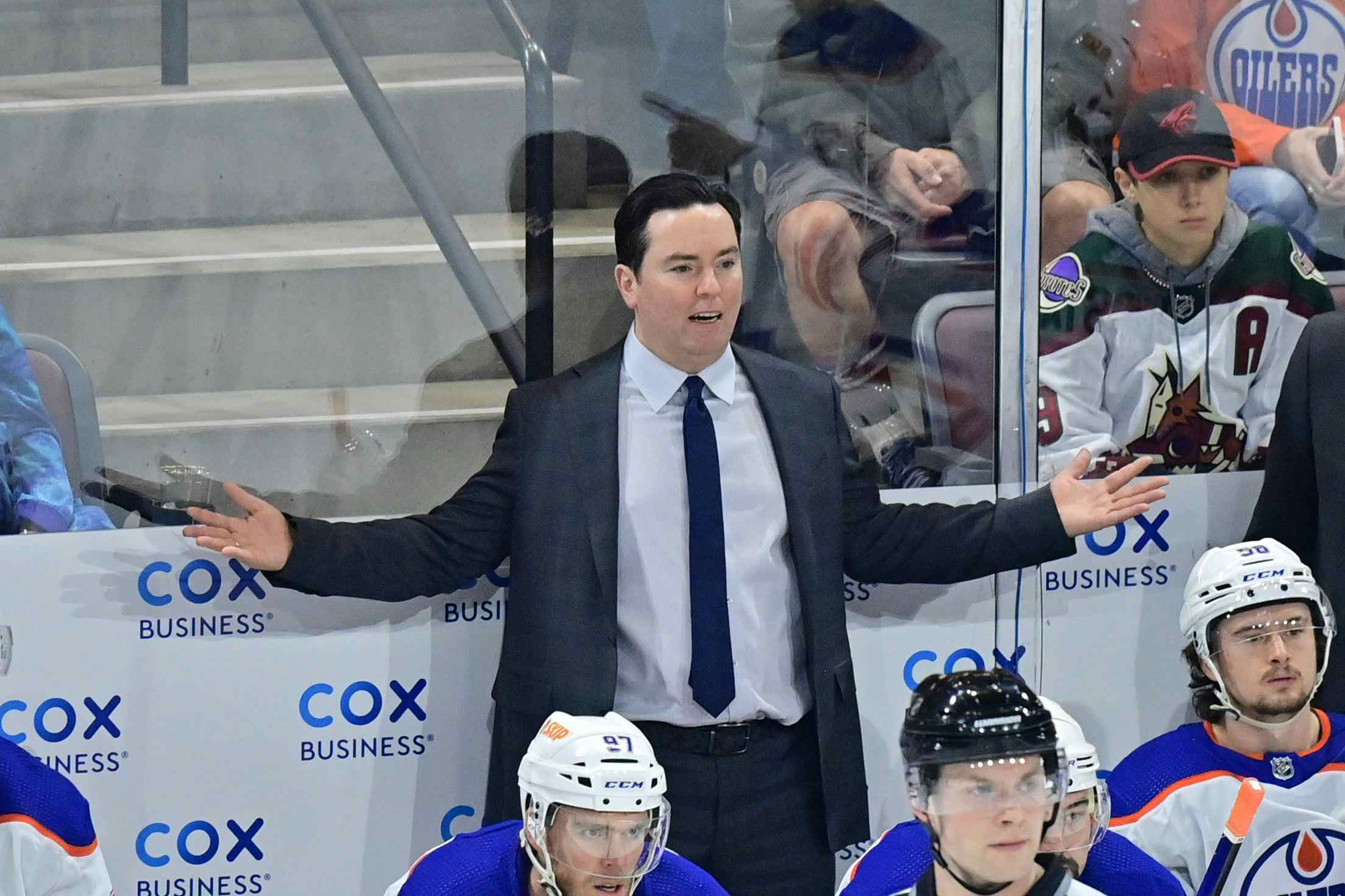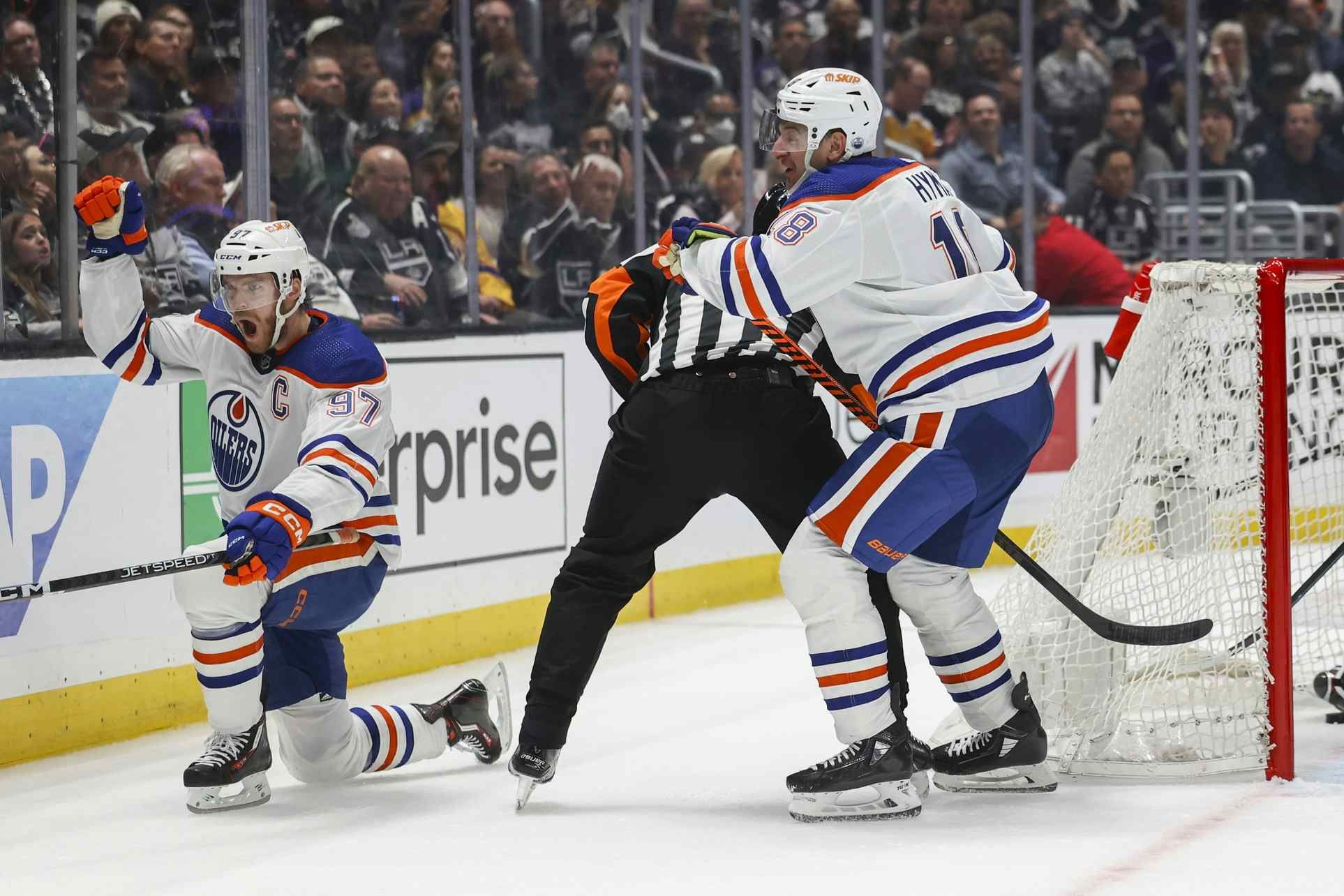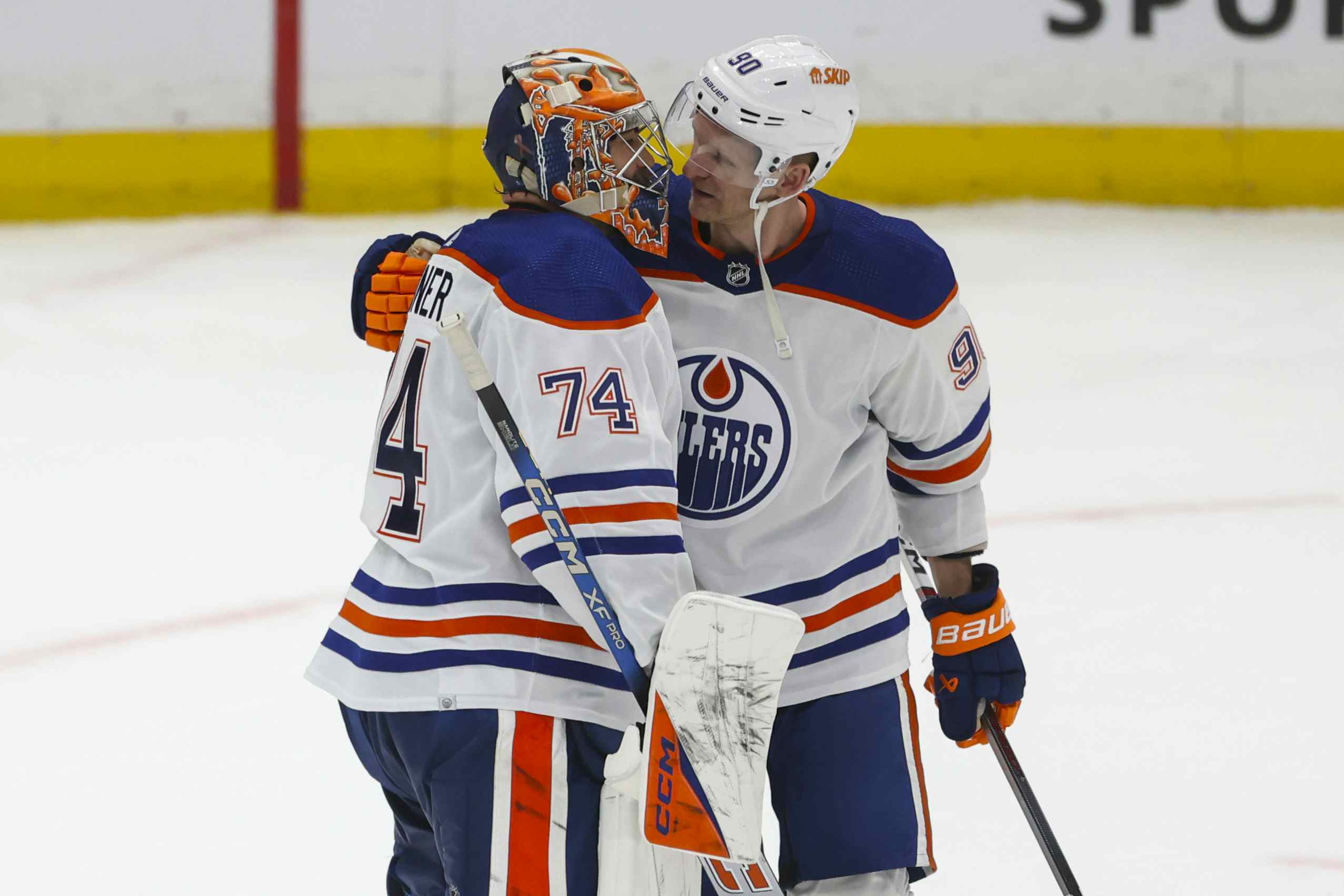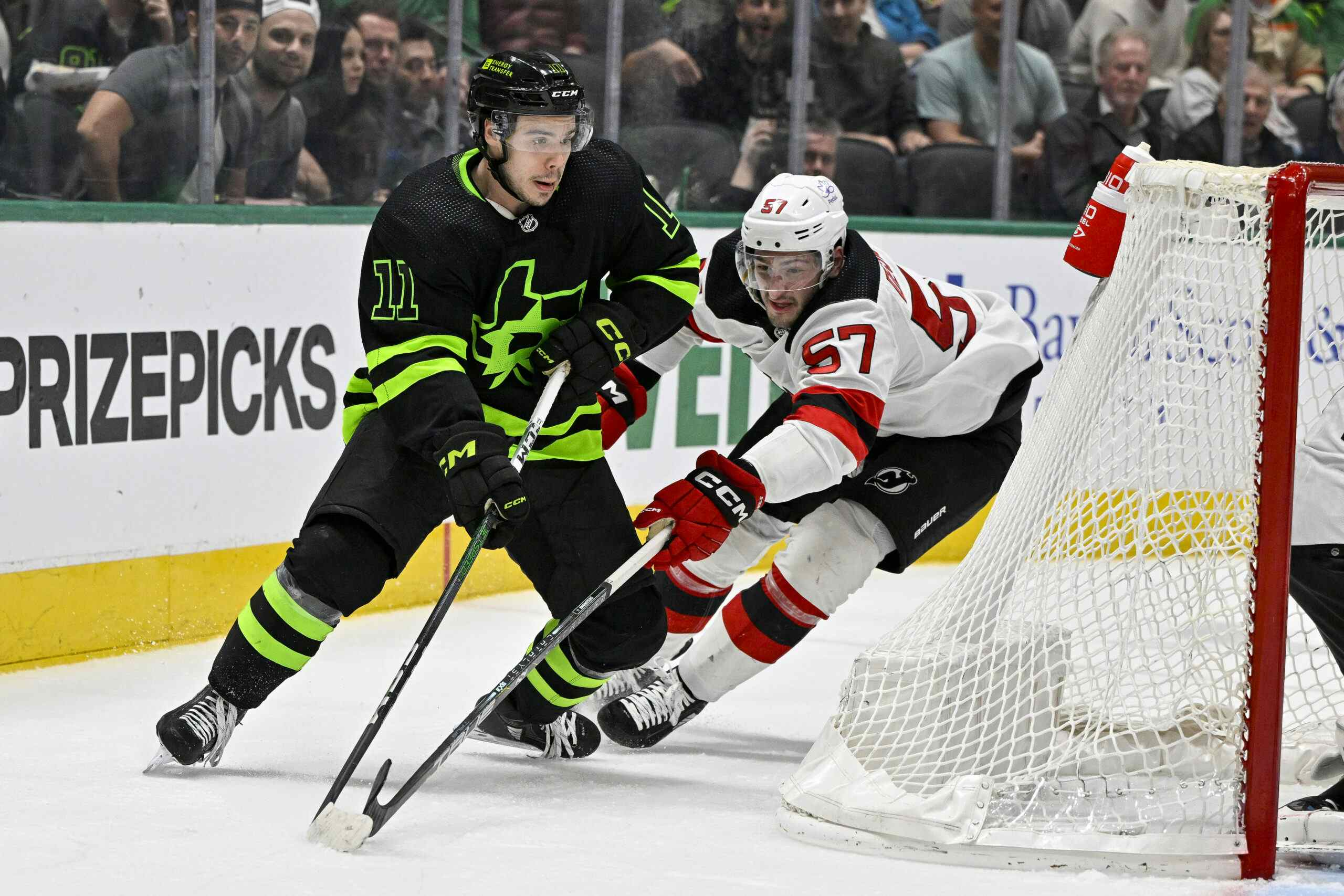One. Two. Three.

Top-six and bottom-six are terms that are instantly
recognizable to the typical hockey fan. Used to describe NHL rosters for as
long as I can remember, the former refers to the skilled, scoring forwards
typically though to inhabit a team’s first two lines while the latter denotes
checkers and physical players who occupy the lower rungs on the league’s
forward ladder.
recognizable to the typical hockey fan. Used to describe NHL rosters for as
long as I can remember, the former refers to the skilled, scoring forwards
typically though to inhabit a team’s first two lines while the latter denotes
checkers and physical players who occupy the lower rungs on the league’s
forward ladder.
It’s a term which is increasingly out-of-step with the way
that general managers and head coaches at hockey’s highest level build and
operate their rosters. And anyone using that lens to evaluate the early success
of the Edmonton Oilers is going to be missing a pretty significant piece of the
puzzle.
that general managers and head coaches at hockey’s highest level build and
operate their rosters. And anyone using that lens to evaluate the early success
of the Edmonton Oilers is going to be missing a pretty significant piece of the
puzzle.
It’s Turned Into a
Top-Nine League

That’s because Edmonton isn’t running a top-six and
bottom-six. Instead, the team is using three lines heavily and leaning on its
fourth line in a specialized defensive role. It’s basically the blueprint that Craig
MacTavish mentioned repeatedly during his time as general manager:
bottom-six. Instead, the team is using three lines heavily and leaning on its
fourth line in a specialized defensive role. It’s basically the blueprint that Craig
MacTavish mentioned repeatedly during his time as general manager:
We’ve talked about how we want to build our team going
forward. We want three offensive lines and we want a line, probably centered by
Boyd Gordon, that can start much like Chicago is built, that you have another
line that you can start predominantly in the defensive zone. Then you’ve got
three possession lines, or three lines that you can count on for offence.
Swap out Boyd Gordon’s name for that of Mark Letestu and
that’s exactly what the Oilers have run so successfully this year. It’s not
fashionable to say nice things about MacTavish after his short and difficult tenure as GM, but the man was a
good NHL coach for a long time and was bang-on about one of the things that
made the Blackhawks so successful.
that’s exactly what the Oilers have run so successfully this year. It’s not
fashionable to say nice things about MacTavish after his short and difficult tenure as GM, but the man was a
good NHL coach for a long time and was bang-on about one of the things that
made the Blackhawks so successful.
It’s interesting that MacTavish mentioned talking internally
about the forward alignment. Washington Capitals GM Brian MacLellan used
almost the same wording two years later and one gets the sense that this is
increasingly the consensus among hockey people:
about the forward alignment. Washington Capitals GM Brian MacLellan used
almost the same wording two years later and one gets the sense that this is
increasingly the consensus among hockey people:
You know, we’ve talked about it: It’s turned into a
top-nine league. I don’t know that we had a pure top nine. Maybe we had a top
eight or a top seven-and-a-half or however you want to value that, but I think
we were a little short on the top nine. I think you need two-way guys, guys who
can play both ways. Ideally for us, I think we need some offense out of it.
MacLellan’s observation may have come, in part, from
watching his team fall to the Pittsburgh Penguins in the second round of the
playoffs. Pittsburgh famously
iced a three-line attack to great success last spring, leading us to wonder
at the time if the Oilers were going to take a similar tack.
watching his team fall to the Pittsburgh Penguins in the second round of the
playoffs. Pittsburgh famously
iced a three-line attack to great success last spring, leading us to wonder
at the time if the Oilers were going to take a similar tack.
Now they have.
86%

The big advantage of taking a three-line approach is that it
ensures there’s always a dangerous player on the ice. At five-on-five this
year, the Oilers have had at least one of Connor McDavid, Leon Draisaitl or
Ryan Nugent-Hopkins on the ice a whopping 86 percent of the time.
ensures there’s always a dangerous player on the ice. At five-on-five this
year, the Oilers have had at least one of Connor McDavid, Leon Draisaitl or
Ryan Nugent-Hopkins on the ice a whopping 86 percent of the time.
The upside hasn’t always been scoring. Both Nugent-Hopkins
and Draisaitl have unremarkable even-strength scoring totals. Draisaitl in
particular is down to 1.31 points/hour after scoring 2.20 points/hour last
season; the former is really not a great number.
and Draisaitl have unremarkable even-strength scoring totals. Draisaitl in
particular is down to 1.31 points/hour after scoring 2.20 points/hour last
season; the former is really not a great number.
But the way MacLellan phrased things – “I think you need
two-way guys, guys who can play both ways. Ideally for us, I think we need some
offense out of it” – helps us to put the proper focus on those results. Scoring
is great, but it isn’t the primary objective. Out-scoring is.
two-way guys, guys who can play both ways. Ideally for us, I think we need some
offense out of it” – helps us to put the proper focus on those results. Scoring
is great, but it isn’t the primary objective. Out-scoring is.
We’re still early enough in the year that it’s hard to get
much of a read off goal totals, but we can start by looking at the shot
metrics. I like Fenwick (a plus/minus of shots and missed shots), which doesn’t
penalize teams for being good shot blockers. Here’s how the team has looked by that metric with those three centres on the ice:
much of a read off goal totals, but we can start by looking at the shot
metrics. I like Fenwick (a plus/minus of shots and missed shots), which doesn’t
penalize teams for being good shot blockers. Here’s how the team has looked by that metric with those three centres on the ice:
- McDavid: +3.4 shots/missed shots per hour
- Nugent-Hopkins: -0.7 shots/missed shots per hour
- Draisaitl: +0.3 shots/missed shots per hour
As expected, when McDavid is on the ice, the Oilers control
the play. With either of Nugent-Hopkins and Draisaitl on the ice, they’re going
head-to-head with the opposition on even terms (Draisaitl’s line generates more
shots but also gives more up; Nugent-Hopkins’ trio generates fewer shots but
allows very little).
the play. With either of Nugent-Hopkins and Draisaitl on the ice, they’re going
head-to-head with the opposition on even terms (Draisaitl’s line generates more
shots but also gives more up; Nugent-Hopkins’ trio generates fewer shots but
allows very little).
There’s a lot of room for optimism in those kinds of
numbers. A team that wins the battle with its uber-skilled first line and holds
its own down the heart of the lineup will win a lot of hockey games. Even if
the fourth line gives some of that back a) they don’t play a lot of minutes and
b) they generally play against lines that aren’t particularly good at
capitalizing on their chances anyway.
numbers. A team that wins the battle with its uber-skilled first line and holds
its own down the heart of the lineup will win a lot of hockey games. Even if
the fourth line gives some of that back a) they don’t play a lot of minutes and
b) they generally play against lines that aren’t particularly good at
capitalizing on their chances anyway.

Early this season, Peter Chiarelli told
630 CHED’s Bob Stauffer that the plan was to move Draisaitl to the wing,
loading up two lines:
630 CHED’s Bob Stauffer that the plan was to move Draisaitl to the wing,
loading up two lines:
“Wingers are more plentiful than centres or d-men, all day
long. I’m comfortable where we’re at. We’re going to look at Jesse [Puljujarvi]
over a period of time. We’re going to have Leon [Draisaitl] – we may not start
that way, tomorrow – but ultimately our plan is to start Leon on the right
side.”
The preseason loss of Drake Caggiula to injury means that
hasn’t been an option yet for the Oilers, and given the way things have gone so
far I’d suggest it’s worth putting that idea on the backburner for a while.
That old MacTavish plan the team has used in the early going is generating some
serious results.
hasn’t been an option yet for the Oilers, and given the way things have gone so
far I’d suggest it’s worth putting that idea on the backburner for a while.
That old MacTavish plan the team has used in the early going is generating some
serious results.
Recent articles from Jonathan Willis

